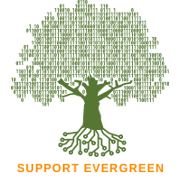To really understand the
progression of the "web," and how it will continue to evolve, we need
to establish a common understanding of what these 'versioned' phases
imply.
Web 1.0 - The original development and release of the world wide
web in 1993 presented the Internet traveling user with a very static
interaction with hosted content. In fact, to say interaction at all is a
stretch. A user was basically limited to reading and discovery through
hyperlinks. Websites and information present on the Internet was posted
rarely and generally served to provide topical data based on the domains
interests.
Web 2.0 - This is how we most commonly identify the modern
Internet that features all of the functions and intractability that
we observe and utilize. The designs are user friendly and continue to
press the boundaries of creating a stimulating experience. Collaboration,
interoperability, and user modified content are the essential elements that
drive this modern experience where users feel part of a community. The
Web 2.0, as it would imply, is not an updated version of the Internet or any
sort of network infrastructure. It simply establishes how developers and
users have created a new landscape that presents a much more highly
sophisticated realm of possibility.
So, what comes next? Web 3.0? The next major phase of
the web is disputed by IT professionals. It could include significant
updates in technical infrastructure, content creation, content delivery,
personalization, or it may even include first-generation technologies we can't
even predict yet. One such theory includes the potential development of a
"metaverse," where physical and virtual worlds join together to create
simulations and augmented realities. While this certainly correlates with
modern interest in 3D technologies, it would seem that these sorts of
possibilities are a bit further down the road.
If you consider the jump from 1.0 to 2.0 was primarily the
community based social interactions, it would be safe to assume that 3.0 could
be a very mild advancement such as the computer generated content and delivery.
Right now we have RSS feeds and various sources that are starting to
study our behavior and patterns on the Internet to deliver the most relevant
user experience on a person by person basis. That presents a significant
core upgrade from simple interaction, but is not such a broad leap to require
inventions and seemingly distant future possibilities.
Consensus may never be reached, and the title of Web 3.0 may have
to be retroactively applied to an era once we have determined we are already
past it. As I doubt they called the world wide web 'Web 1.0' at the time
of it's conception, they were more likely to coin the term after they
established the fluctuation into the Web 2.0 landscape.
Then, maybe we should start evaluating what Web 4.0 will
introduce?


